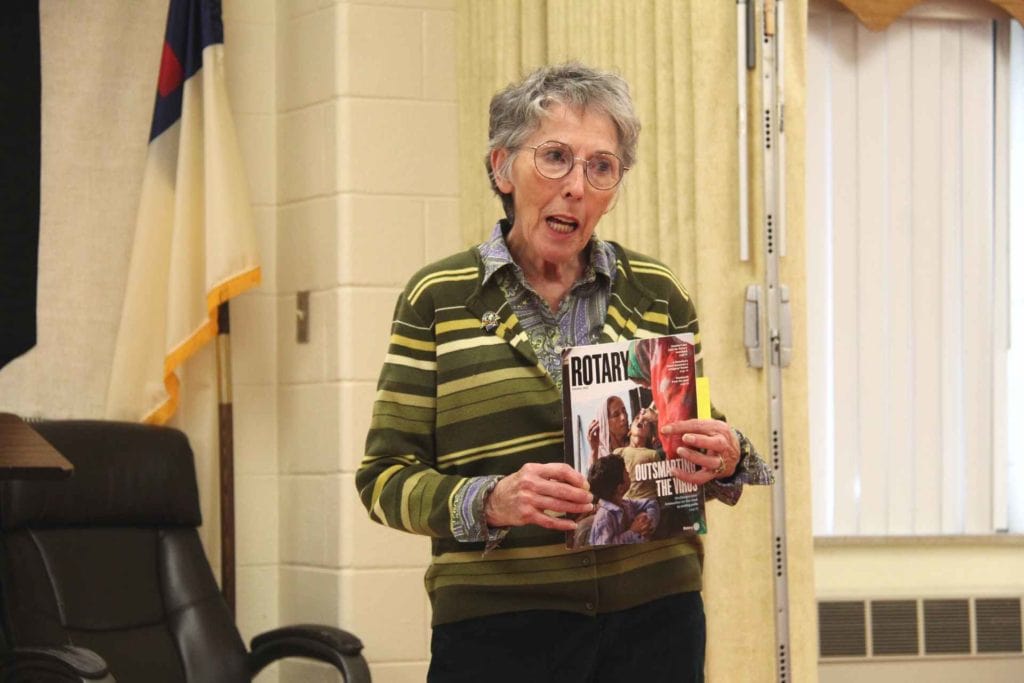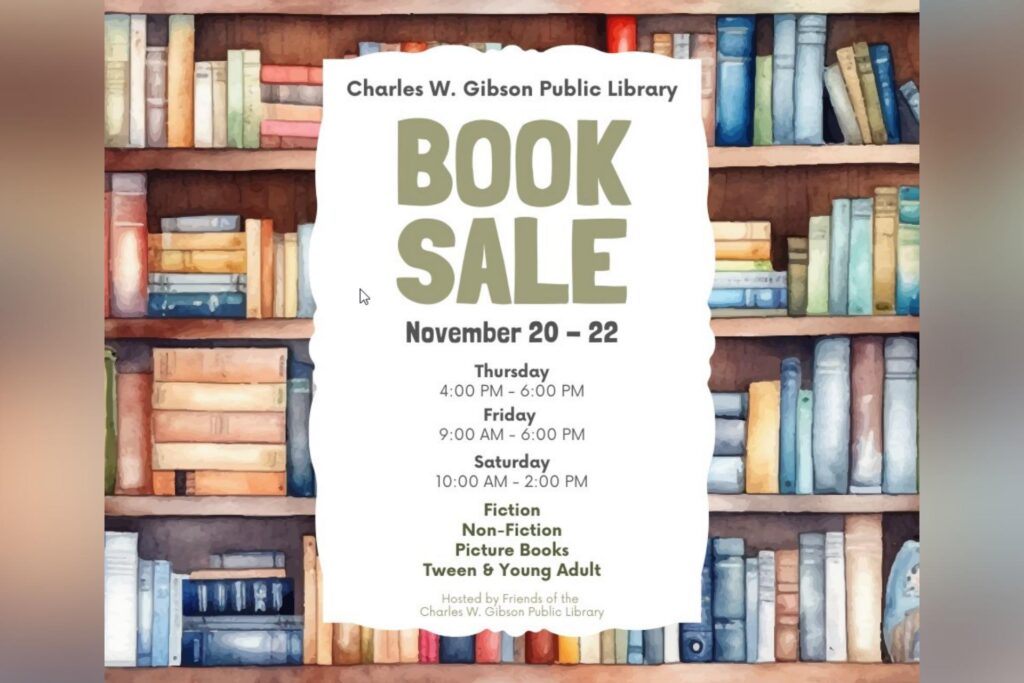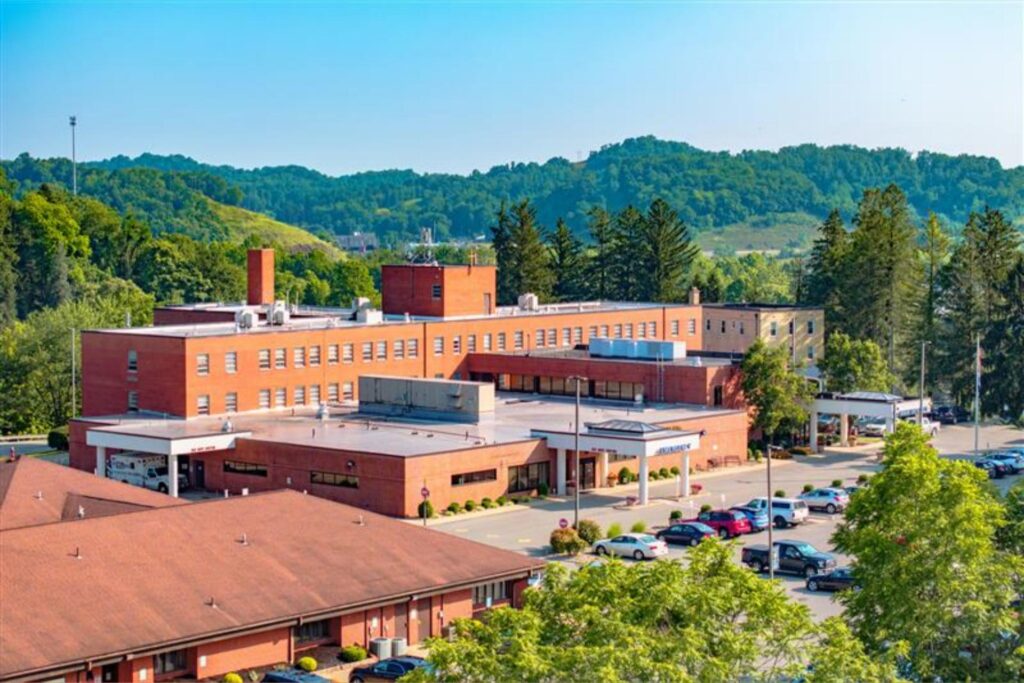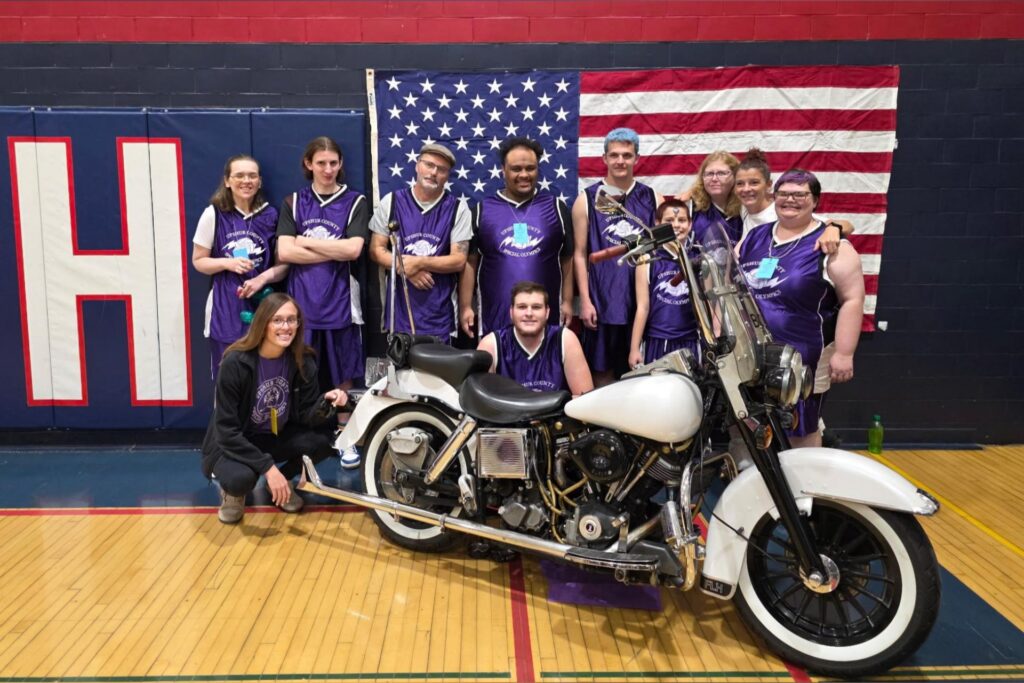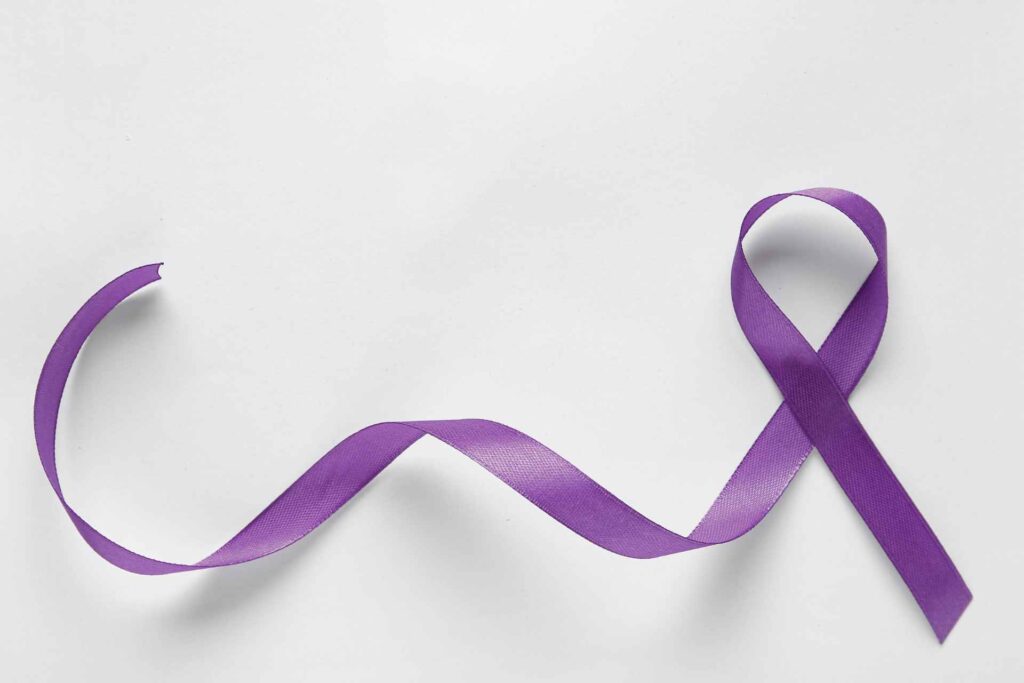BUCKHANNON – The Rotary Club has contributed more than $2.1 billion to help eradicate polio.
Marty Kelley gave an update to the Rotary Club of Buckhannon-Upshur Nov. 15 about Rotary and its efforts to eliminate polio.
“I thought I knew everything, but so much has changed and I’m going to try my best to explain it all to you,” Kelley said. “For starters, our October Rotary magazine has an article that is really, really fabulous.”
She said the article talked about cutting-edge research and the case of polio in upstate New York.
“I remember thinking, ‘how could that be?’ because Rotary has been battling polio for 35 years, just members of Rotary have contributed $2.1 billion and that $2.1 billion, so we can be really proud of being Rotarians.”
Kelley explained there are four types of polio and different kinds of vaccines.
“When you talk about polio, it’s not just polio, it’s type one, type two, type three and it could also be called a strain and one more type that is called circulating vaccine-derived poliovirus, so there’s four different viruses,” Kelley said. “Type two and type three have been eradicated, so only type one is out there in the wild and even though type two was eradicated, it is really spreading, and it is in existence because of that circulating vaccine-derived polio.”
The United States and other countries use different forms of the polio vaccine.
“The only type of vaccine the United States has used since the year 2000 is inactivated poliovirus, and it was Dr. Salt’s method of taking care of polio,” Kelley said. “It does kill all three kinds; it has all three kinds of inactivated virus in the thing they put in the arm, and why we all got it, and it’s safe, it cannot cause the circulating virus that we have now.”
Kelley said the vaccine used in the United States is harder to circulate in other countries because it must be delivered via a needle, so these countries use an oral polio vaccine.
“The oral polio vaccine could treat all three of the original viruses, but it uses the live virus, so they take all those little tubes for the little kids, and they just put one drop on their tongue, so it’s easy to administer and that’s why they use it,” Kelley said. “It’s the only thing they can do, however, it causes shedding, so when the virus goes into your body it doesn’t kill that virus. You can shed it through nasal, saliva and you can share it through waste, and that’s a big problem.”
Three-quarters of the people at risk for contracting polio live in areas where things are so dirty, they can’t wash their dishes.
“They can’t do anything about their sanitation, they don’t have toilets, they don’t have sewer systems, water is not sanitized, so the oral vaccine, even though it’s much easier to administer and get out there, it does have that big problem,” Kelley said. “When your body sheds the live virus, a lot of things are contaminated.”
Researchers are investigating a new type of vaccine that will address the type of virus that is being shed so it can’t replicate or mutate another form of the virus.
“We don’t use the kind of vaccine that your body sheds, and we have excellent sanitation, but third world type of countries that is a problem,” Kelley said. “The case we had in New York state, they will not release any names or anything, but that was an individual who just traveled to the United States and brought that mutated virus here.”
